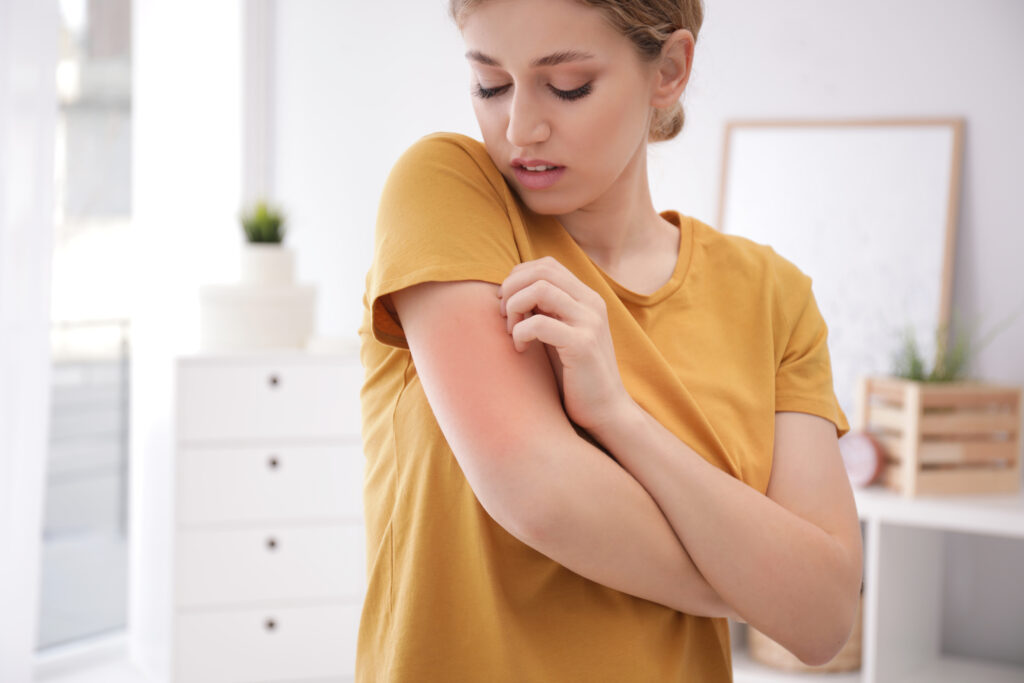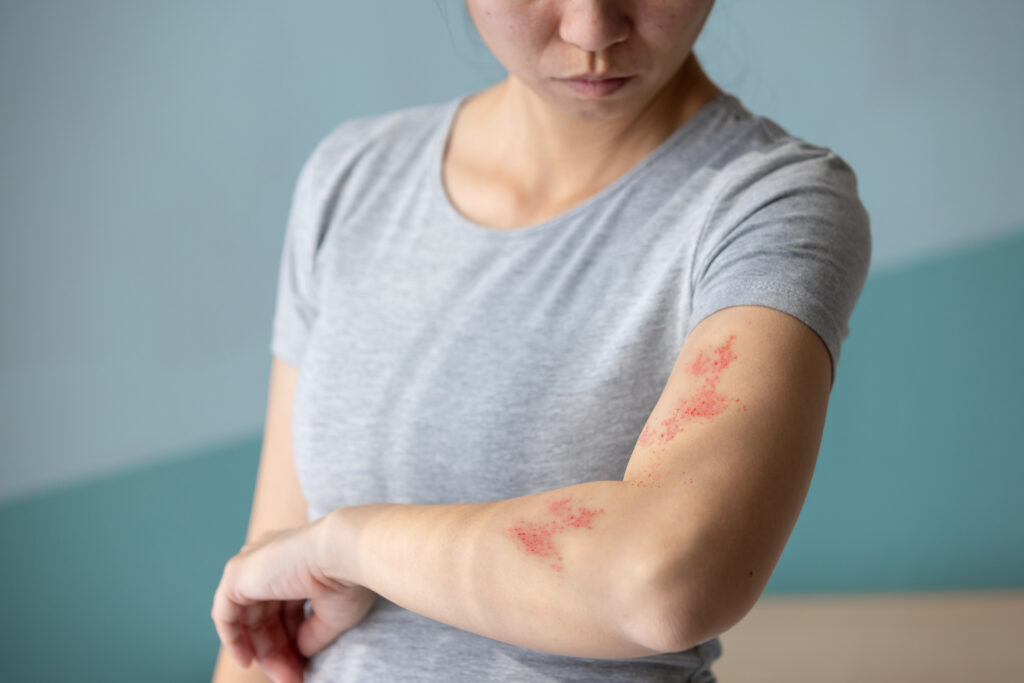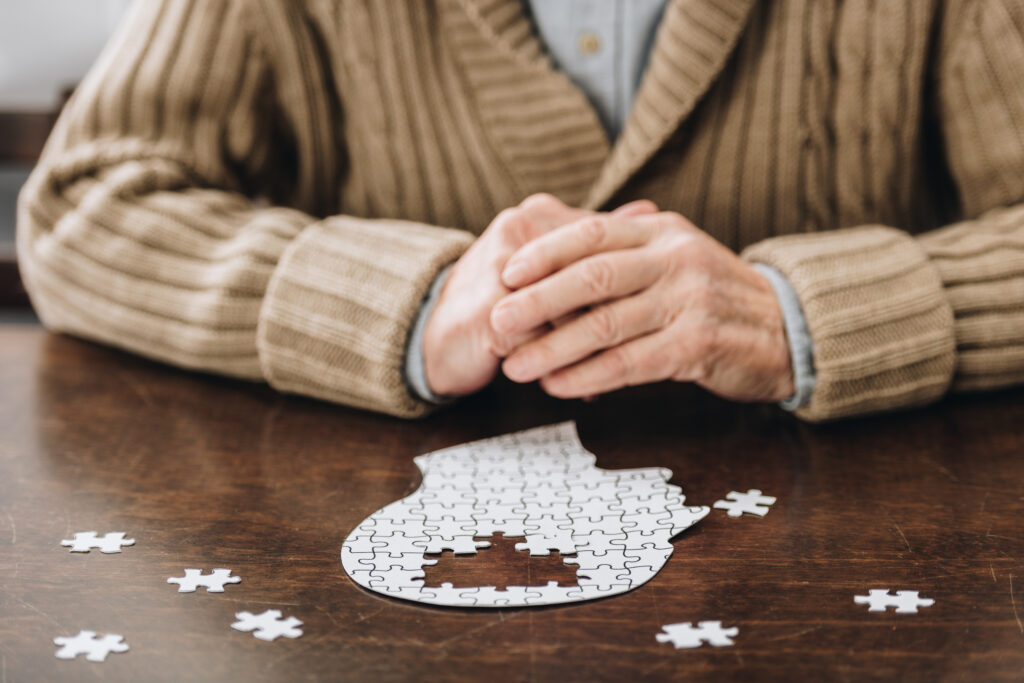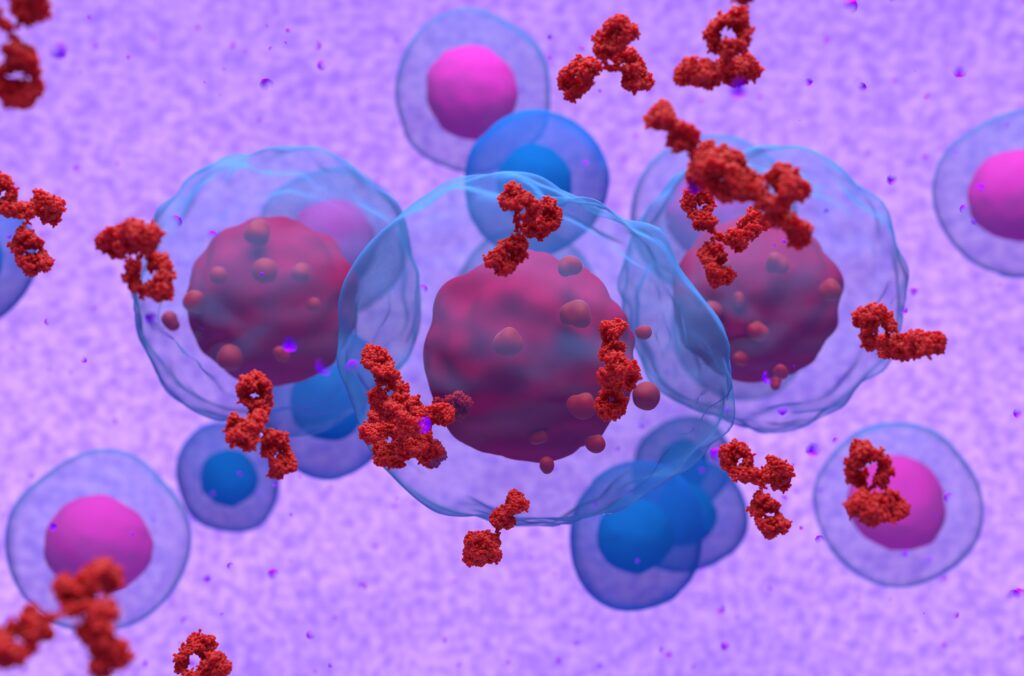
Impetigo is a highly infectious skin condition that causes blistering sores on the affected skin. While the condition is generally short-lived, it can cause pain, itching, and general discomfort for its lifespan. Impetigo often impacts children and infants who frequently exchange bacteria in daycares, schools, and playgrounds, though it can occur at any age.
Due to its highly infectious nature, impetigo spreads like wildfire. Since this condition pops up most in kids, it’s easy for playmates, parents, caregivers, and early education teachers to disperse impetigo within their communities. Fortunately, impetigo is rarely dangerous, highly treatable, and often avoidable when preventative measures are taken.
What Causes Impetigo?
Impetigo is caused by infectious bacteria, typically one of two types: Staphylococcus (staph) aureus or Streptococcus (strep) pyogenes. Many cases of impetigo begin when bacteria enter otherwise healthy skin through a wound. This can include insect bites, cuts, and scrapes. Impetigo also occurs when bacteria permeate the skin due to pre-existing health conditions, such as eczema, scabies, or rashes from allergies.
Symptoms of impetigo, including skin sores, tend not to emerge until several days after someone has become infected. Because of this trait, it’s easy to spread this condition without knowing it.
Infection can travel between people when you come into contact with sores, but it can also spread without skin-to-skin contact. You may catch impetigo from touching items belonging to someone infected, such as their sheets, clothing, or belongings. When symptoms emerge, it’s important to briefly quarantine and avoid touching to prevent impetigo from spreading.
Symptoms of Impetigo
There are three types of impetigo, each with unique symptoms.
The most common form of impetigo, non-bullous impetigo, is known for itchy, red sores. These largely form around the mouth and the nose. They tend to burst rapidly, creating inflamed skin and swollen glands. The wounds of these sores leak pus and form a honey-colored crust.
The second type of impetigo, affecting mainly children in infancy, is bullous impetigo. This condition includes blistering on the skin of the face or lower back/trunk, though it does not create skin redness. When these sores do burst, they form a non-golden crust. Unlike non-bullous impetigo, this impetigo can create lesions on the lips, contributing to discomfort while eating or drinking.
Lastly, untreated impetigo can develop into a severe form called ecthyma. This painful infection passes through the layers of skin, creating cavernous ulcers underneath one’s superficial skin. Healing can take longer than either bullous or non-bullous impetigo, and scarring may occur due to the infection impacting the skin’s deeper tissue.
How Is Impetigo Treated?
Impetigo treatment typically involves a round of antibiotics. Doctors will prescribe either an oral or a topical antibiotic. An oral antibiotic is most effective when the number of skin sores is significant. For a small amount of sores, topical ointment can help address infection at the source and reduce itching and pain. Fortunately, a round of antibiotics can quickly quell the spread of infection. Within 48 hours, one undergoing treatment should no longer be contagious to those around them.
If the area of infection is not substantial, you may be able to heal the skin with home treatment. Soaking the affected skin in warm water, using an antibacterial hand wash, and applying over-the-counter antibiotic ointment can all help address the symptoms of impetigo. Skin-soothing natural remedies, such as aloe vera or essential oils, may also help. However, if the symptoms worsen or interfere with routine, it’s best to consult a doctor.
Preventing Impetigo
One of the simplest steps to prevent impetigo is regular hand washing. Since bacteria can lead to impetigo, particularly when it comes into contact with wounds or cuts, keeping one’s hands clean can reduce the chances of developing this skin condition.
Another important stage of prevention is wound care. It’s not uncommon for kids to get scrapes in playground accidents or bicycle turnovers, but insufficient wound management can foster the conditions for impetigo to develop. Be sure to treat and cover any wounds on yourself or your child with clean, dry bandages so your injuries are not susceptible to infection.
If you or a loved one are experiencing impetigo, there are steps you can take to stop the spread. It’s important to keep infected items separate from the rest of the family, including toys, bedding, and clothes. Hand washing is important to avoid infection, particularly for uninfected people. With symptom awareness and management, getting ahead of impetigo before it migrates to others is possible.
Resource Links
- “Impetigo” via NHS Inform
- “Impetigo” via Mayo Clinic
- “Impetigo: All You Need to Know” via CDC
- “Impetigo” via Cleveland Clinic
- “Impetigo” via National Library of Medicine
- “Impetigo: Tips for Treatment and Prevention” via Doctors of Osteopathic Medicine





